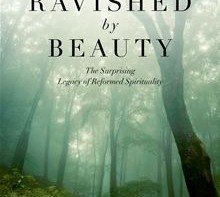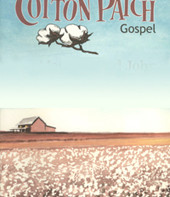On January 6, 2012, the public radio show This American Life aired an excerpt from monologuist Mike Daisey‘s show The Agony and the Ecstasy of Steve Jobs. Daisey describes a trip to the Foxconn factory in Shenzhen, China, which makes Apple products. During the trip to Shenzhen, he meets underage workers at the factory (“14 years old, 13 years old, 12”). He also meets injured workers at a restaurant, including a group whose “hands shake uncontrollably” due to factory exposure to the chemical hexane, used to clean iPhones.
It’s compelling theatre, and Daisey’s show prompted investigations into working conditions at Apple’s factories in China. Unfortunately, most of the above is not true, and on March 16th, This American Life retracted the episode.
In the “Retraction”, Daisey acknowledges that some of the events which he claimed to have experienced first-hand were either made up or told to him second-hand, and that he included them for dramatic effect. [1]
In response, radio host Ira Glass asks Daisey for “honest labeling”: “The normal worldview is somebody stands on a stage and says, ‘This happened to me,’ I think it happened to them, unless it’s clearly labeled, ‘Here’s a work of fiction.'”
Why did Daisey’s audiences not see a fiction label on Daisey’s statements, which were made within the context of a theatrical performance?
1) Daisey made the same statements outside the theatre as he did within the theatre. Daisey claimed, to the producers of This American Life, that events which he describes within the performance actually took place. Daisey has also given interviews to and written columns for major media outlets, in which he likewise claimed that these events happened. All these statements were made outside of the context of a theatrical performance.
2) Daisey’s performance style encourages belief. In his performances, Mike Daisey generally sits behind a desk on a bare stage, with nothing but a microphone, glass of water, and his script. He hands out “action sheets” after performances (at least of The Agony and the Ecstasy…) encouraging audience members to take action based on the story they heard. Most importantly, he speaks in the first person, blurring the distinction between himself as a character in his stories and himself as a person in the real world.
In this case, a simple line in the show programme, such as, “This show is based on real events. Some events have been dramatized for effect,” would be sufficient to alert the audience to the need to do more research. In addition, Daisey’s “action sheets” could include a sampling of the most startling statistics and events that are true both in the story and outside of it. This would serve to increase the impact of the show’s narrative as well as motivate the audience to investigate the facts for themselves.
Both of these suggestions involve taking action outside of the performance itself. They have to do with constructing a sturdy frame around the performance, so that the world inside the theatre and the world outside are not confused. When artworks are presented as spurs to action, the distinction between fact and fiction needs to be made clear either within the work, or outside it. The stronger the frame, the more free the artist can actually be to weave fact and fiction into one seamless story.[2]
Do you think Daisey’s show needed framing? Or is the audience’s job to evaluate what they see? Can “frames” destroy the integrity of an artwork?
_____________
1. In the original excerpt, Daisey explains to his translator his plan to pose as a businessman in order to obtain access to factories. “‘You will lie to them?'”, she asks. “And I say, ‘Yes, Cathy. I’m going to lie to lots of people.'” “Retraction” makes a point of this anecdote.
2. Daisey has since apologised for allowing his work to be aired on This American Life.





For anyone looking to read more on this topic, 2am Theatre blogger David J. Loehr has an excellent piece, “Context is Everything”, which includes a blog round-up of related articles: http://www.2amtheatre.com/2012/03/20/context-is-everything/
And an excellent apologia for Daisey as theatre at the Huffington Post:
Defending Mr. Daisey, Pt. 1: http://www.huffingtonpost.com/scott-walters/mike-daisey-this-american-life_b_1399707.html
Defending Mr. Daisey, Pt. 2: http://theatreideas.blogspot.co.uk/2012/04/defending-mr-daisey-part-2-big-fact.html
Cole,
Good breakdown of the Daisey scandal. In the TAL interview, Daisey seemed to hope that the patina of “art” would cover his very real deceptions. But the mistake he is making here is that, not just the details, but the very effect of the show rests on an assumption that these events are factual. The whole tenor of the show is, as you say, an earnest account, and when that earnestness is in question, the whole thing crumbles.
Kevin Kinghorn, in an essay in my forthcoming book THE PHILOSOPHY OF SHERLOCK HOLMES, define deception like this:
“To communicate something with the intention that another person comes to hold some false belief, where the reasons the deceiver manufactures rely on an incorrect assumption of someone’s insincerity.”
THE AGONY…OF STEVE JOBS trades on Daisey’s sincerity, and there causes audiences to hold false beliefs.
Phil,
Thanks. I agree, the mistake was that the show was presented as entirely factual, in a way meant to encourage the audience to understand “factual” in a journalistic (not a “theatrical” way). David’s post, which I linked to in my above comment, shows pictures of the programme disclaimers at both the Public and Woolly Mammoth Theaters (in NYC and DC, respectively), where the show was presented. The same disclaimer, inserted by Daisey, was, “THIS IS A WORK OF NONFICTION”. The inclusion of that disclaimer is an acknowledgement that an audience is naturally going to assume a piece being performed in a theatre is fiction; it is an attempt to override that assumption, an extra effort made to claim to assert the factual nature of the entire piece. It’s as if, instead of just not putting up a label, he took down the label that said “Fiction” in order to put up a label that said “Fact”.
Yup. Daisey clearly wanted people to get the idea this was all true. Though maybe he thought he could, if pressed, hide behind the skirts of Lady Drama. Which is what he tried to do in the TAL interview.
But I think that Daisey is being willfully blind to the complicated way that the arts, even fiction, interact with things that we believe to be true about the world.
I wonder if many people would go see AGONY OF…STEVE JOBS if they thought it was fiction? I think I would find Daisey’s earnest account of bad work conditions really tedious and trying if I thought it was largely made up. And likewise would find the bits of biography confusing. Big chunks of this show make no sense if filed under fiction.
I read the script with the knowledge that parts of it were fictional, and I found myself wondering what was true and what was made-up. But I still enjoyed it, and apparently others who have seen/read it have had the same experience, even knowing it was “based on a true story” rather than completely a true story. It’s like THE SOCIAL NETWORK – Aaron Sorkin was clear that he had changed parts of the story to make it better drama, but I still really enjoyed it. Knowing that the events Daisey refers to are based on real events, even if they didn’t happen to him (e.g., the hexane workers), still provides an emotional punch. I just wish he had acknowledged that he could still make a good story with either just the facts, or with a semi-fictional dramatization presented as a semi-fictional dramatization.
Yup. I think some alternate framing could have kept Daisey’s bacon out of the fire. Though it seems like it would have been better for him to just try and tell the truth in an entertaining way. According to TAL, many of the “deeper truths” Daisey was trying to communicate (such as about young teens in factories) aren’t supported either. So if he presented a “fictionalized” story about teens making iPads, he still might be misleading people about Apple’s practices.
In the apology on his blog, he quotes himself from a 2011 interview that a reader dredged up for him:
“Oh, well you know what I’ve found over the years is that the facts are your friends, like if there’s ever a case where I’m telling the story and I find the facts are inconvenient, 9 times out of 10 it means I haven’t thought about the story deeply enough.”
And he acknowledges he made a mistake this time, and should have let the facts tell him the story, if he wanted to make a political argument based on the facts.
One fact of which is that Apple is aware of the problem of underage workers, it’s a small problem in comparison with the other problems, and they’ve already taken steps to address it.